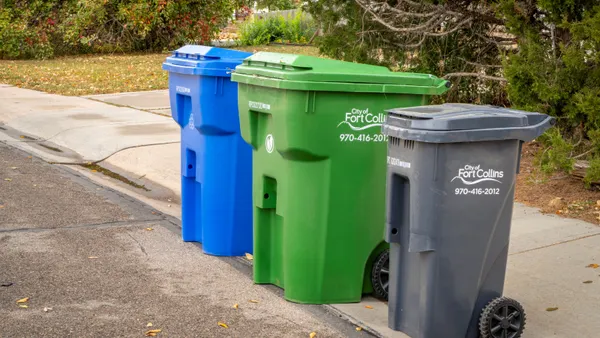Dive Brief:
- The California Department of Resources Recycling and Recovery (CalRecycle) has released a new set of recommendations for reworking the state’s 15-year-old Electronic Waste Recycling Act, as first reported by E-Scrap News.
- A main recommendation is to expand the number and types of e-scrap devices included in the Covered Electronic Waste (CEW) payment program to go beyond the current standard of cathode ray tube (CRT), LCD and plasma display electronic devices with a screen larger than 4 inches. Under the recommendations, nearly any device with a battery or power cord would be covered.
- A couple of recommendations relate to increasing manufacturer responsibilities in areas such as product durability, reporting, labeling and promoting reuse or recycling. CalRecycle also recommends changing the CEW fee from its current retail-level collection in which consumers are charged an advanced recycling fee, to brand owner and manufacturer-level collection.
Dive Insight:
Under the current structure, the advanced recycling fee collected from consumers is distributed by the state government to e-scrap companies that handle the included devices on a per-pound allotment. This made more sense when programs relied on weight from bulky CRTs, but as devices become smaller and lighter, that system has begun to fall out of vogue in the e-scrap world.
While the short-term aim of CalRecycle's recommendations is to update the e-scrap system and related fees, the agency names moving toward extended producer responsibility (EPR) as a long-term goal. California lags behind the approximately two dozen other states that include some form of EPR in their e-scrap programs and the concept is even more popular across various recycling streams in Europe.
CalRecycle aims to adopt a better product stewardship strategy so end-of-life product management is a shared responsibility among producers, users and all entities in the product chain, instead of the onus falling on local governments and the general public. The agency has also voiced support for prioritizing more durable products under the "right to repair" concept, which is currently under consideration by the state legislature.
Various e-scrap industry players have expressed support for that idea of the government no longer handling the recycling fee collection and distribution, but rather switching to more of a watchdog role. Instating EPR models can create market disruption — and is, unsurprisingly, concerning for manufacturers — so CalRecycle plans to take its time on this part of the plan.
Although CalRecycle formally adopted the recommended updates to the California Electronic Waste Recycling Act earlier this month, many of them would need legislative action before going into effect.









